UPSC Daily Current Affairs- 16th February 2024 | Current Affairs & Hindu Analysis: Daily, Weekly & Monthly PDF Download
GS-I
Lord Mahavira
Subject: Art and Culture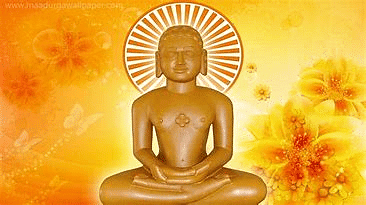
Why in News?
Archaeology students and professors in Tamil Nadu recently unearthed a rare 1000-year-old stone statue of Mahavira, the 24th tirthankara of Jainism.
About Lord Mahavira:
- He was the twenty-fourth and the last Tirthankara of the Jain religion.
- Mahavir was born in 599 B.C. as a prince in Bihar. At the age of 30, he left his family and royal household, gave up his worldly possessions, including clothing, and became a monk.
- He followed an extreme ascetic life, attaining kaivalya, the stage of omniscience or highest perception.
- Mahavira advocated nonviolence (ahimsa) in all circumstances and the acceptance of the mahavratas, the five “great vows” of renunciation.
- At the heart of right conduct for Jains lie the five great vows:
- Nonviolence (Ahimsa): not to cause harm to any living beings
- Truthfulness (Satya): to speak the harmless truth only
- Non-stealing (Asteya): not to take anything not properly given
- Chastity (Brahmacharya): not to indulge in sensual pleasure
- Non-possession/Non-attachment (Aparigraha): complete detachment from people, places, and material things.
- Mahavir’s Teachings:
- He organised his followers into a fourfold order, namely monk (Sadhu), nun (Sadhvi), layman (Shravak), and laywoman (Shravika). Later on, they are known as Jains.
- The ultimate objective of his teaching is how one can attain total freedom from the cycle of birth, life, pain, misery, and death, and achieve the permanent blissful state of one's self. This is also known as liberation, nirvana, absolute freedom, or Moksha.
- He preached that right faith (Samyak-darshan), right knowledge (Samyak-jnana), and right conduct (Samyak-charitra) together will help attain the liberation of one's self.
- Mahavir's message of nonviolence (Ahimsa), truth (Satya), non-stealing (Achaurya), celibacy (Brahma charya), and non-possession (Aparigraha) is full of universal compassion.
- Mahavir rejected the concept of God as a creator, a protector, and a destroyer of the universe. He also denounced the worshipping of gods and goddesses as a means of material gains and personal benefits.
Source: Times of India
Gulf Stream
Subject: Geography
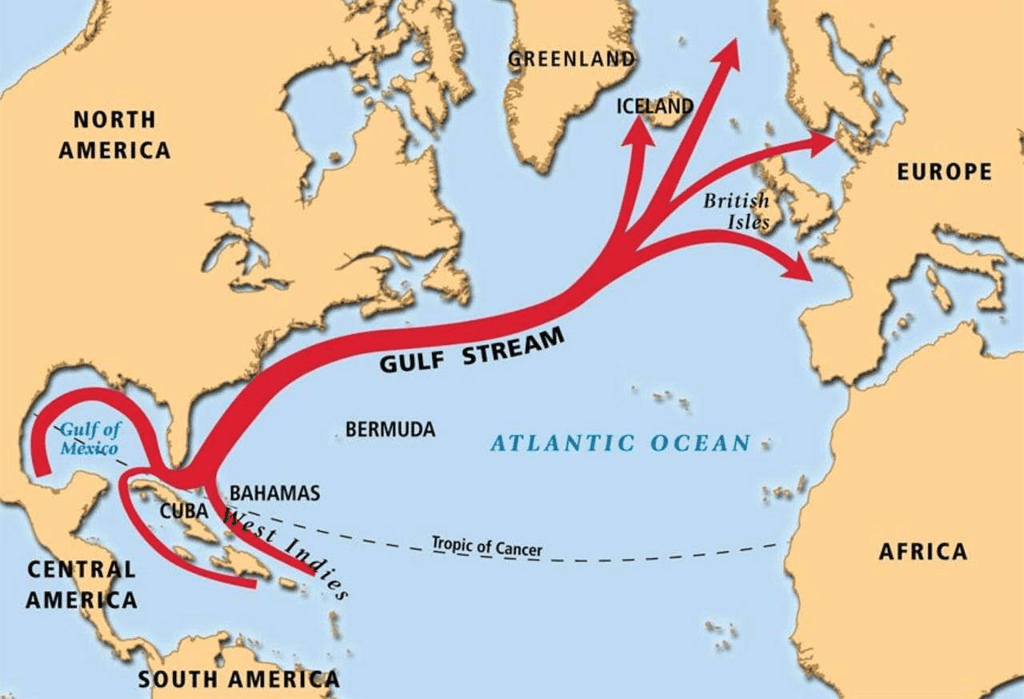
Why in News?
A recent scientific study estimates a timescale for the collapse of the Gulf Stream between 2025 and 2095, with a central estimate of 2050, if global carbon emissions are not reduced.
About Gulf Stream:
- It is a swift and warm ocean current that flows along the eastern coast of North America and crosses the Atlantic Ocean towards Europe.
- This extension towards Europe is known as the North Atlantic drift.
- The Gulf Stream transports more water than all the world's rivers combined.
- Key characteristics:
- Location: It originates in the Gulf of Mexico. It then travels northward along the eastern coast of the United States. It follows a north-eastward path across the western North Atlantic Ocean.
- Sources: The two equatorial sources of the Gulf Stream are the North Equatorial Current (NEC), which flows generally westward along the Tropic of Cancer, and the South Equatorial Current (SEC), which flows westward from southwestern Africa to South America and then northward to the Caribbean Sea. Together, these two warm currents, along with waters from the Gulf of Mexico, form the Gulf Stream.
- Warmth: The current carries warm water from the tropics (around 25 to 28°C or 77 to 82°F) to higher latitudes.
- Width and Speed: The Gulf Stream is several hundred kilometres wide and can flow at an average speed of about four miles per hour (6.4 kilometres per hour). However, its speed can vary depending on the location and other factors.
- Depth: The current is also very deep, extending to depths of up to 1,000 metres.
- Importance and Impact:
- Climate Regulation: It moderates the temperatures along the eastern coast of North America, keeping the coastal areas warmer in winter and cooler in summer compared to inland regions at the same latitudes. Since the Gulf Stream also extends toward Europe, it warms Western European countries as well.
- Weather Patterns: The warm and moist air above the Gulf Stream can lead to the formation of low-pressure systems, which may develop into storms or hurricanes. It can also contribute to the formation of fog in certain areas.
- Maritime Navigation: The Gulf Stream has been a crucial factor in maritime navigation for centuries. It provides a fast and efficient route for ships travelling between North America and Europe, as it aids in faster travel times due to its speed.
- Ocean Circulation: The Gulf Stream is an essential part of the larger oceanic circulation system known as the Atlantic Meridional Overturning Circulation (AMOC). The AMOC plays a vital role in redistributing heat around the Earth and regulating global climate patterns.
Source: NDTV
GS-II
Unlawful Activities (Prevention) Act, 1967 (UAPA)
Subject: Polity and Governance
Why in News?
At the request of petitioners, the Supreme Court recently allowed pleas challenging provisions of the Unlawful Activities (Prevention) Act, 1967 (UAPA) to be withdrawn.
About Unlawful Activities (Prevention) Act, 1967 (UAPA):
- The UAPA was introduced in 1967 as a legislation to set out reasonable restrictions on the fundamental freedoms under Article 19(1) of the Constitution, such as freedom of speech, the right to assemble peacefully, and the right to form associations.
- Over the years, terror-specific legislations like the Terrorist and Disruptive Activities (Prevention) Act (TADA) and Prevention of Terrorism Act (POTA) were repealed after running into legal trouble, and the UAPA became the primary anti-terror legislation in India.
- In line with its stated objectives, the UAPA punishes the commission, funding, and support of “unlawful activities” and “terrorist acts”.
- It lays down the definitions and rules for designating an organisation as an "unlawful association" if it is engaged in certain types of activities.
- ‘Unlawful activity’ is defined as any action taken by an individual or association – through an act, words, spoken or written, or by signs or visible representation – which is intended to, or supports a claim to, bring about the cession of a part of the territory of India, or the secession of a part of the territory of India from the Union, or which incites any individual or group of individuals to bring about such cession or secession.
- It covers activities which disclaim, question, disrupt, or are intended to disrupt the sovereignty and territorial integrity of India, and which cause or intend to cause disaffection against India.
- In 2004, the UAPA was amended, and 'terrorist activities' were brought within its fold, under which 34 outfits, including the Lashkar-e-Taiba and the Jaish-e-Mohammad, were banned.
- Under the Act, the central government may designate an organisation as a terrorist organisation if it:
- commits or participates in acts of terrorism;
- prepares for terrorism;
- promotes terrorism;
- is otherwise involved in terrorism;
- The 2019 Amendment gave the Home Ministry the power to designate individuals as terrorists.
- The Act extends to the whole of India.
- The UAPA applies to anyone who commits a UAPA crime in India or outside India. It applies to Indian citizens irrespective of where the crime is committed and also includes people in Government service and people on ships and aircraft registered in India.
Source: Live Law
Young Scientist Programme (YUVIKA)
Subject: Government Schemes
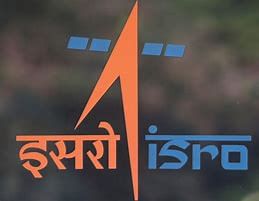
Why in News?
The Indian Space Research Organisation (ISRO) is set to conduct its special 'Young Scientist Programme' or 'YUVIKA' for school children.
About the Young Scientist Programme (YUVIKA):
- "Young Scientist Programme", or "YUva VIgyani KAryakram" YUVIKA, is a learning and awareness-creating programme of the ISRO to impart basic knowledge on Space Technology, Space Science, and Space Applications to younger students with a preference for rural areas.
- The programme is aimed at creating awareness about the emerging trends in science and technology amongst the youngsters, who are the future building blocks of our nation. ISRO has chalked out this programme to "Catch Them Young".
- The programme is also expected to encourage more students to pursue Science, Technology, Engineering and Mathematics (STEM) based research /careers.
- Eligibility:
- Those who have finished class 8 and are currently studying in class 9 can apply for the programme.
- Three students from each state/Union Territory will participate in this programme every year, covering CBSE, ICSE, and state-board syllabus.
- The selection is based on 8th Standard academic performance and extracurricular activities.
- Students belonging to the rural area have been given special weightage in the selection criteria.
- In case there is a tie between the selected candidates, the younger candidates will be given priority.
- What is being offered?
- It is a two-week residential programme offered by ISRO.
- It will include invited talks, experience sharing by eminent scientists, facility and lab visits, exclusive sessions for discussions with experts and practical and feedback sessions.
- A minimum participation will be ensured from each State / UT.
Source: India Today
Supreme Court Strikes Down Electoral Bonds Scheme
Subject: Polity and Governance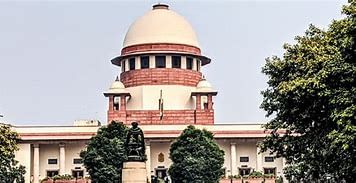
Why in News?
The Supreme Court delivered a groundbreaking unanimous judgment, deeming the electoral bonds scheme “unconstitutional and manifestly arbitrary.”
- Led by Chief Justice of India (CJI) DY Chandrachud, a five-judge Constitution Bench unanimously struck down the scheme, citing infringement on voters’ right to information and disproportionate restrictions.
Key Reasons for Striking Down Electoral Bonds Scheme
[A] Violation of Right to Information (RTI)
- Petitioners argued that the scheme violates Right to Information under Article 19(1)(a) of the Constitution, emphasizing voters’ right to information regarding political party funding.
- Despite the government’s stance that citizens lack a “right to know” about political contributions, the court upheld voters’ right to such information, citing the inherent connection between money and politics.
- The court highlighted the “deep association” between money and politics, stressing the need for transparency to prevent quid pro quo arrangements.
[B] Disproportionate Restrictions:
- The scheme’s anonymity for donors, aimed at curbing black money, was deemed disproportionate to its goal.
- Advocates highlighted potential loopholes allowing for cash donations, undermining its efficacy in combating black money.
- The court emphasized the availability of alternative, less restrictive measures to achieve the scheme’s objectives, such as Section 29C of the Representation of People Act, 1951.
[C] Privacy vs. Public Interest:
- While the government argued for donor anonymity to protect privacy rights, advocates stressed the importance of public scrutiny in political funding.
- The court clarified that donor privacy extends only to genuine forms of public support, rejecting absolute anonymity facilitated by the scheme.
[D] Unlimited Corporate Contributions:
- Advocates underscored the adverse impact of unlimited corporate contributions on free and fair elections.
- The court reinstated the cap on political contributions from companies, citing the need to prevent undue corporate influence in politics.
- It noted concerns that unlimited contributions could incentivize quid pro quo arrangements, especially by loss-making companies.
Impact on Key Legal Amendments
- Representation of the People Act, 1951: The court struck down amendments exempting political parties from disclosing donations above Rs. 20,000, reinforcing the balance between voters’ right to information and donor privacy. (Section 29C)
- Companies Act, 2013: Amendments allowing unlimited corporate contributions were overturned, restoring the cap on political donations by companies and preserving electoral integrity. (Section 182)
- Income-tax Act, 1961: Exemptions for political parties to maintain records of donations received via electoral bonds were annulled, safeguarding voters’ right to information. (Section 13A)
Application of Proportionality Test
[A] Definition:
- The proportionality test assesses the balance between competing fundamental rights or interests and the measures taken by the state to achieve its objectives.
- It involves four criteria: legality, necessity, proportionality in the strict sense, and balancing of interests.
[B] Government’s Arguments:
- The government defended the scheme, citing legitimate aims such as tackling black money and protecting donor anonymity.
- Solicitor General Tushar Mehta argued that the right to information does not extend to information not in the state’s possession.
[C] Court’s Analysis:
- Applying the proportionality test, the court scrutinized the balance between competing fundamental rights, emphasizing the necessity of the “least restrictive” methods.
- It underscored the importance of less intrusive alternatives, such as the electoral trusts scheme, in achieving the scheme’s objectives.
Why is this a Landmark case?
- Burden of Proof: The court held that the state must demonstrate that its measures are the “least restrictive” and that no other “equally effective” methods exist to achieve its objectives.
- Balancing Competing Rights: Unlike previous approaches prioritizing public interest over individual rights, the court’s focus is on balancing competing fundamental rights.
- Structured Proportionality Test: The verdict applies a structured proportionality test, requiring the state to demonstrate that its actions restricting fundamental rights are proportional to its objectives.
- Application of Legal Precedents: While the right to privacy ruling laid down the law, subsequent cases like Aadhaar (2018) and Demonetization (2023) applied the structured proportionality test. The electoral bonds verdict represents a significant departure in this regard.
Conclusion
- The Supreme Court’s verdict reaffirms its commitment to upholding constitutional principles and safeguarding democratic processes.
- By striking down the electoral bonds scheme and reinstating key legal provisions, the court emphasizes the primacy of transparency and accountability in electoral financing.
Source: The Hindu
Gender Disparities: Big Blindspot in India’s Health Policy
Subject: Polity and Governance
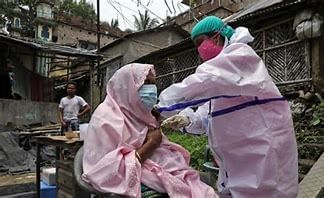
Why in News?
Understanding the Gender GapDespite comprising nearly half of India’s health workforce, women face significant barriers in reaching leadership positions within the healthcare sector, highlighting deep-rooted gender disparities in health policy and decision-making.
- Data revelations: Official data reveals that while women make up almost 50% of health workers in India, only 18% occupy leadership roles across various health panels, committees, hospitals, and ministries.
- Impact of Gender Disparity: The over-representation of men at the top of the health pyramid perpetuates inequalities in decision-making and policymaking, leading to skewed health systems that fail to address the diverse needs of the population.
- Diversity Gaps: Recent research highlights the prevalence of diversity gaps in India’s National Health Committees, with an “over-concentration” of men, doctors, individuals from urban areas, and bureaucrats. This centralization of power risks excluding diverse perspectives and experiences, hindering the development of inclusive health policies.
- Impact on Policy Formulation: The lack of gender diversity in health committees affects policy outcomes, as decisions are often made from a narrow lens, overlooking the nuanced needs of marginalized groups. For instance, the absence of women in decision-making bodies may lead to inadequate consideration of gender-specific health issues such as access to nutritious food for women.
- Professional Barriers: Women encounter various obstacles in advancing their careers in the health sector, including limited opportunities for promotion, unequal pay, and cultural expectations regarding gender roles.
- Underrepresentation in Leadership: Women are significantly underrepresented in medical leadership positions, both within health committees and healthcare institutions, further perpetuating gender disparities in decision-making and policy formulation.
- Policy Interventions: Affirmative policies, such as reserving seats for women and marginalized groups in health committees, can help address gender disparities and promote inclusive decision-making.
- Structural Reforms: Structural changes within healthcare institutions, such as promoting flexible working arrangements and providing dedicated resources for women leaders, are essential to breaking down barriers to gender equality in leadership.
- Community Engagement: Involving directly affected communities in policy-making processes can ensure that health policies are responsive to the needs and priorities of the population, fostering greater inclusivity and accountability.
- Achieving gender equality in health leadership requires concerted efforts to address systemic barriers and promote inclusive decision-making.
- By prioritizing diversity and inclusivity in health policy, India can build more responsive and equitable health systems that serve the needs of all its citizens.
Source: Hindustan Times
GS-III
Kerala seeks to amend the Wildlife Protection Act
Subject: Environment

Why in News?
The Kerala Legislative Assembly unanimously passed a resolution urging amendments to the Wildlife Protection Act of 1972 aiming to tackle the escalating human-animal conflict in the state.
What is Wildlife (Protection) Act, of 1972?
- WPA provides for the protection of the country’s wild animals, birds and plant species, in order to ensure environmental and ecological security.
- It provides for the protection of a listed species of animals, birds and plants, and also for the establishment of a network of ecologically-important protected areas in the country.
- It provides for various types of protected areas such as Wildlife Sanctuaries, National Parks etc.
Kerala’s Demands for Amendment
- Section 11 Amendment: Kerala proposes amending Section 11(1)(A) to empower Chief Conservators of Forests (CCF) instead of Chief Wildlife Wardens (CWLW) to permit hunting of Schedule I mammals. This seeks to expedite decision-making at the local level in handling human-wildlife conflicts.
- Declaration of Wild Boar as Vermin: Kerala urges the Centre to declare wild boars as vermin under Section 62, allowing controlled culling to mitigate threats to life and livelihoods.
Major Reason: Escalating Human-Animal Conflict
- Rising Incidents: Kerala has witnessed a surge in human-animal conflicts, particularly involving elephants and wild boars, causing extensive damage to lives and crops.
- Government Data: In 2022-23, there were 8,873 wild animal attacks, including 4,193 by elephants and 1,524 by wild boars. These incidents resulted in 98 deaths and significant crop loss.
- Wild Boar Menace: Wild boars, in particular, are notorious for ravaging farmlands, with 20,957 incidents of crop damage recorded from 2017 to 2023.
Challenges and Implications
- Urgent Action Needed: Kerala’s plea for amendments highlights the pressing need for effective measures to address the human-animal conflict.
- Local Empowerment: Empowering local forest authorities can lead to quicker responses to wildlife threats, ensuring both human safety and wildlife conservation.
- Balancing Conservation and Livelihoods: Striking a balance between conservation and livelihood concerns is crucial for sustainable coexistence between humans and wildlife.
Conclusion
- Kerala’s proactive stance in advocating for amendments to the Wildlife Protection Act underscores its commitment to confronting the challenges posed by the human-animal conflict.
- These proposed changes aim to protect both citizens and biodiversity, reflecting a holistic approach towards environmental and socio-economic well-being.
Source: Hindustan Times
|
44 videos|5271 docs|1113 tests
|





















